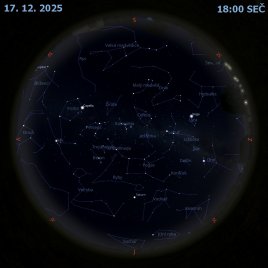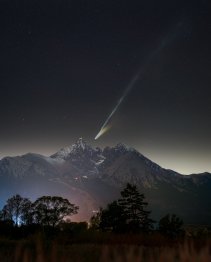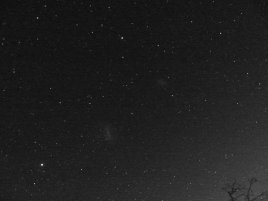Východ Země: Videorekonstrukce
Uznání:
NASA,
SVS,
Apollo 8 Crew;
Lead Animator:
Ernie Wright;
(USRA);
Music:
C Major Prelude
by
Johann Sebastian Bach
Asi ve 12. sekundě tohoto videa se stane něco zvláštního. Začíná vycházet Země. Východ Země nad okrajem Měsíce nastal zítra před 50 lety a překvapil užaslou posádku Apolla 8, lidé nikdy nic takového neviděli. Posádka začala rychle pořizovat fotografie tohoto úžasného pohledu způsobeného obíháním Apolla 8 kolem Měsíce. Video, na které se díváte, je moderní rekonstrukcí této události, jak by vypadala, kdyby ji zachytily současné filmové kamery. Barevné nebeské těleso naší Země vystupuje jako dobře známý obraz vycházející nad vzdálenou a neznámou měsíční krajinou a celá tato scéna je opakem mnohem známějších východů Měsíce při pohledu ze Země. Pro mnoho lidí tato scéna také vyjadřuje jednotu lidstva: ta modrá koule, to jsme my, my všichni tam žijeme. Toto dvouminutové video není zrychlené, toto je skutečná rychlost Země vycházející za okny Apolla 8. O sedm měsíců později kosmonauté třetí další výpravy Apollo 11 nejenom že pozemský Měsíc oblétali, ale také na něm přistáli.
Seznam odkazů v popisu
- APOD: 2015-09-06 Východ Země
- NASA: Apollo 8
- NASA: Apollo Astronaut Shares Story of NASA's Earthrise Photo
- NASA: Fotografie východu Země
- PBS.org: Apollo 8 Insider Stories
- NASA: Earthrise in 4K,
- KennedySpaceCenter.com: Earthrise 50th Anniversary Celebration,
- NASA: Solar System - Earth
- NASA: Earthrise: The 45th Anniversary
- APOD: 2013-11-09 Krajina Apolla 17: Velkolepá pustina
- APOD: 2017-06-16 Východ Měsíce nad Manhattanem
- Wikipedia: Modrá zeměkoule
- Video: Earthrise: A Video Reconstruction
- NYTimes.com: Apollo 8’s Earthrise: The Shot Seen Round the World.
- NASA: Apollo 11
- APOD: One Small Step.
NASA Official: Phillip Newman Specific rights apply. NASA Web Privacy Policy and Important Notices
A service of: ASD at NASA / GSFC & Michigan Tech. U.
Odkaz na originální APOD


